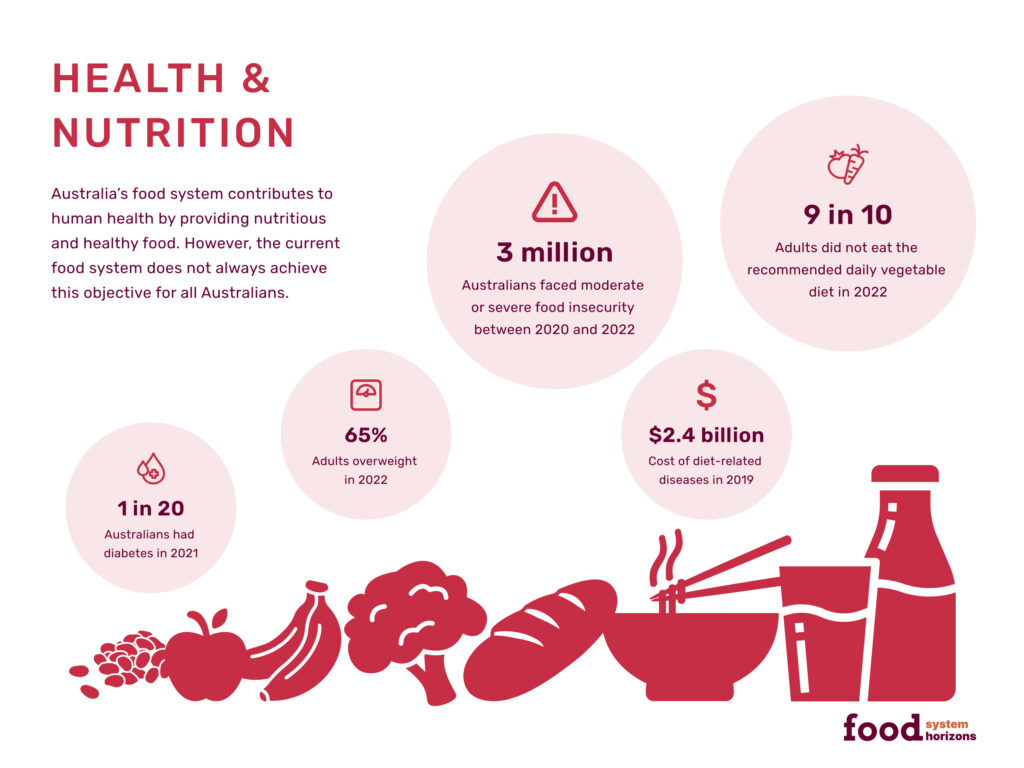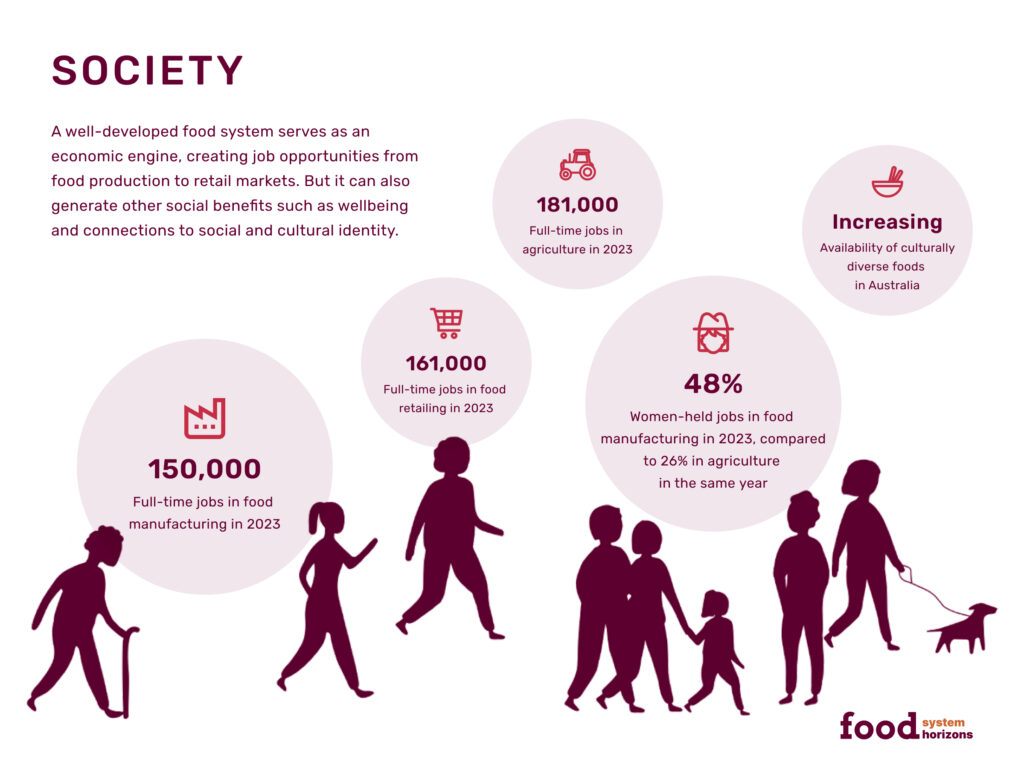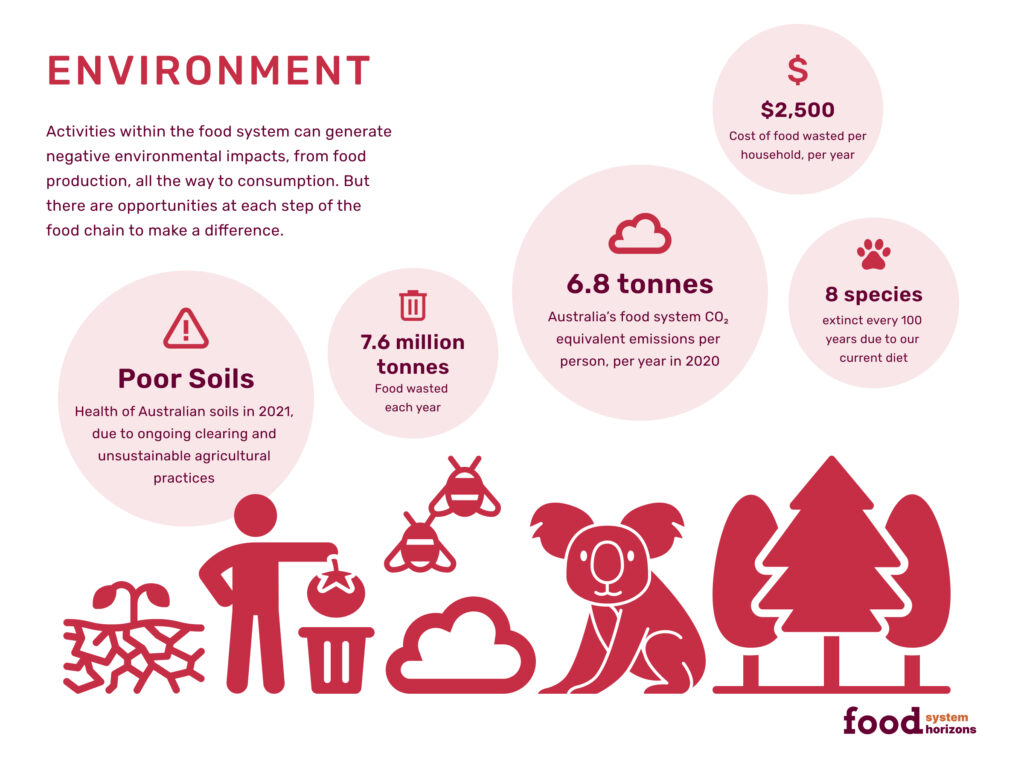Food system outcomes
Food systems meet important goals
The food system refers to all of the complex and interconnected activities, institutions and inputs required to feed people, which result in multiple outcomes, both intended and unintended. These outcomes generally arise from various food system activities that affect individuals, society, the environment and/or the economy.
The health and nutrition figure lists food system outcomes for health and nutrition for Australians. Australia’s food system contributes to human health by providing nutritious and healthy food. However, the current food system does not always achieve this objective for all Australians.
• 1 in 20 Australians had diabetes in 2021.
• 65% of adults were overweight in 2022.
• 3 million Australians faced moderate or severe food insecurity between 2020 and 2022.
• $2.4 billion is the cost of diet-related diseases in 2019.
• Nine in 10 adults did not eat the recommended daily vegetable diet in 2022.
Food system outcomes for health and nutrition. Citation: Food System Horizons 2024.
The society figure lists food system outcomes for Australian society. A well-developed food system serves as an economic engine, creating job opportunities from food production to retail markets. But it can also generate other social benefits such as well-being and connections to social and cultural identity.
• There were 150,000 full-time jobs in food manufacturing in 2023.
• There were 161,000 full-time jobs in food retailing in 2023.
• There were 181,000 full-time jobs in agriculture in 2023.
• There were 48% women-held jobs in food manufacturing in 2023 compared with 26% in agriculture in the same year.
• There is increasing availability of culturally diverse foods in Australia.
Food system outcomes for society. Citation: Food System Horizons 2024.
The environment figure lists food system outcomes for the Australian environment. Activities within the food system can generate negative environmental impacts, from food production, all the way to consumption but there are opportunities at each step of the food chain to make a difference.
• Poor health of Australian soils in 2021, due to ongoing clearing and unsustainable agricultural practices.
• 7.6 million tonnes of food is wasted each year.
• Australia’s food system produced 6.8 tonnes of carbon dioxide equivalent emissions per person, per year in 2020.
• $2,500 is the cost of food wasted per household, per year.
• Eight species go extinct every 100 years due to our current diet.
Food system outcomes for the environment. Citation: Food System Horizons 2024.
The economy figure lists food system outcomes for the Australian economy. Australia’s agricultural and food manufacturing sectors contribute significantly to economic growth. Despite this, the food system’s economic contributions face some significant challenges.
• $64.4 billion was the gross value added by agriculture forestry and fisheries in 2023.
• 72% of agriculture production was exported in 2023.
• 3.8% was agriculture, food and beverages’ share of GDP in 2023.
• 29.3 billion was the gross value added by food and beverages sectors in 2023.
• 7.5% was the annual food inflation rate in 2022-23.
Food system outcomes for the economy. Citation: Food System Horizons 2024.




